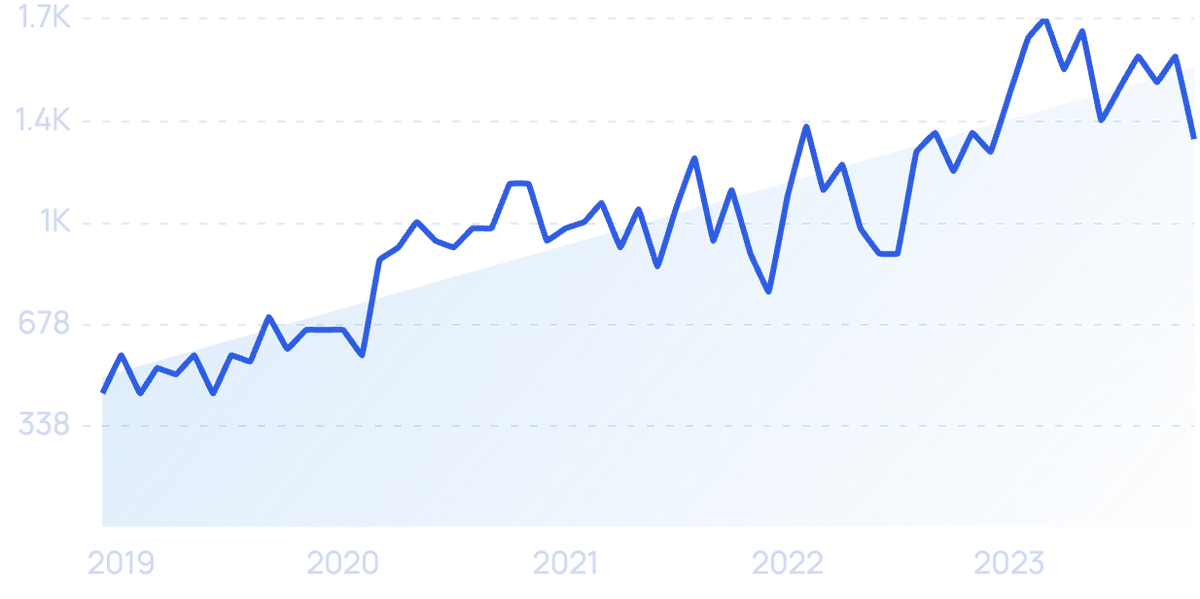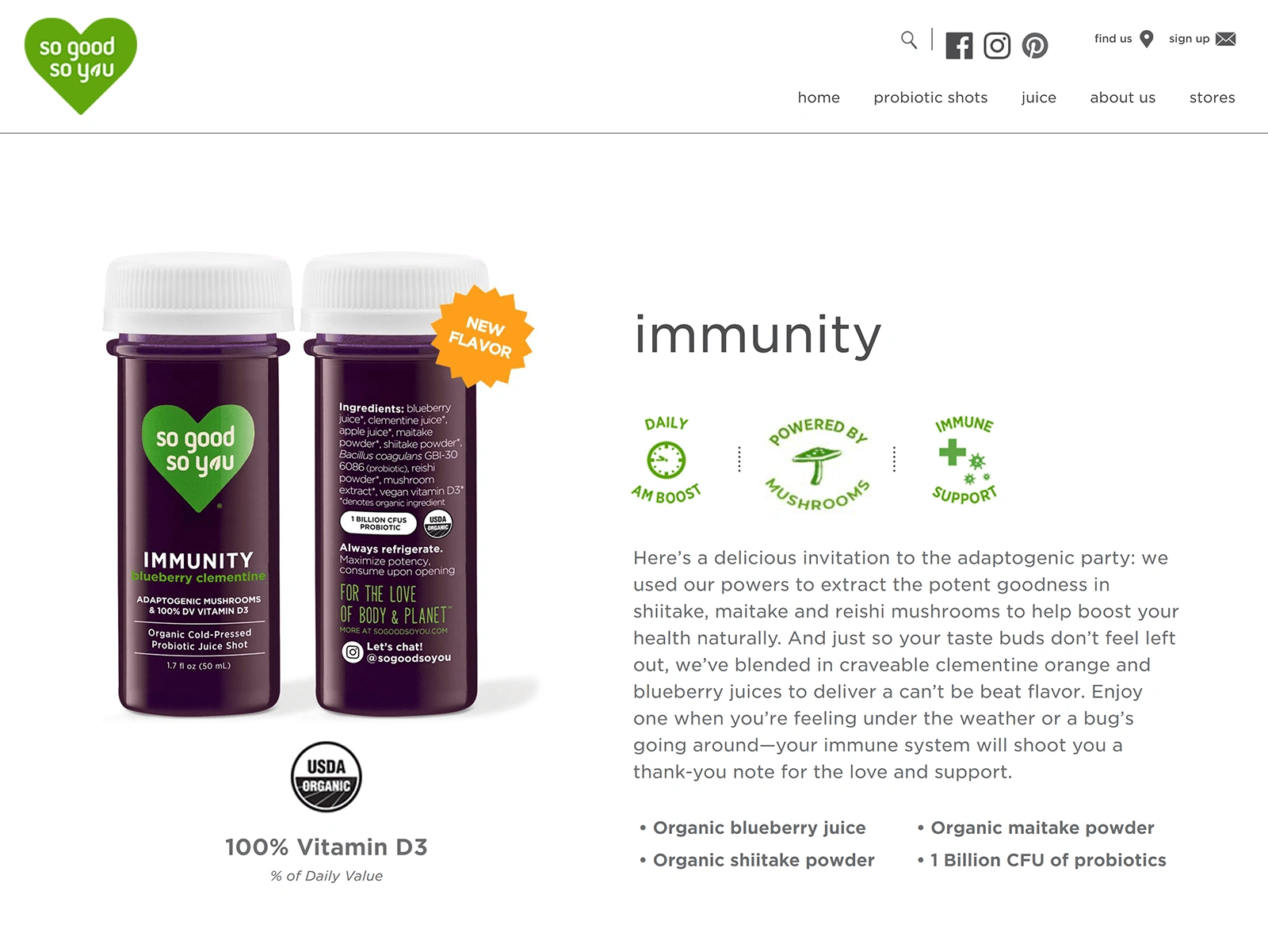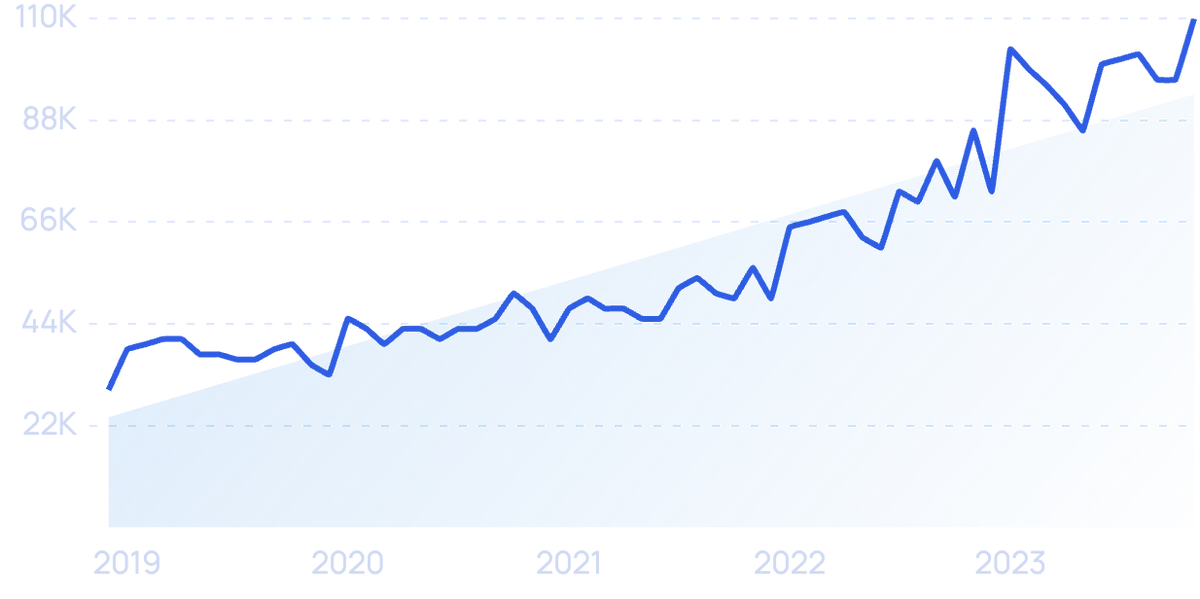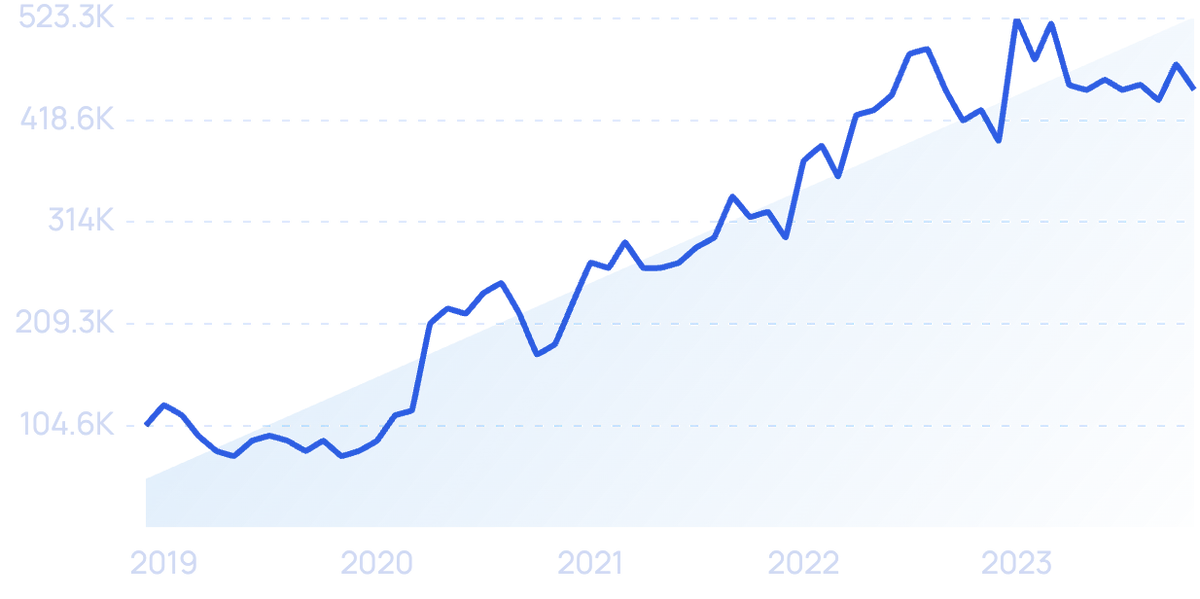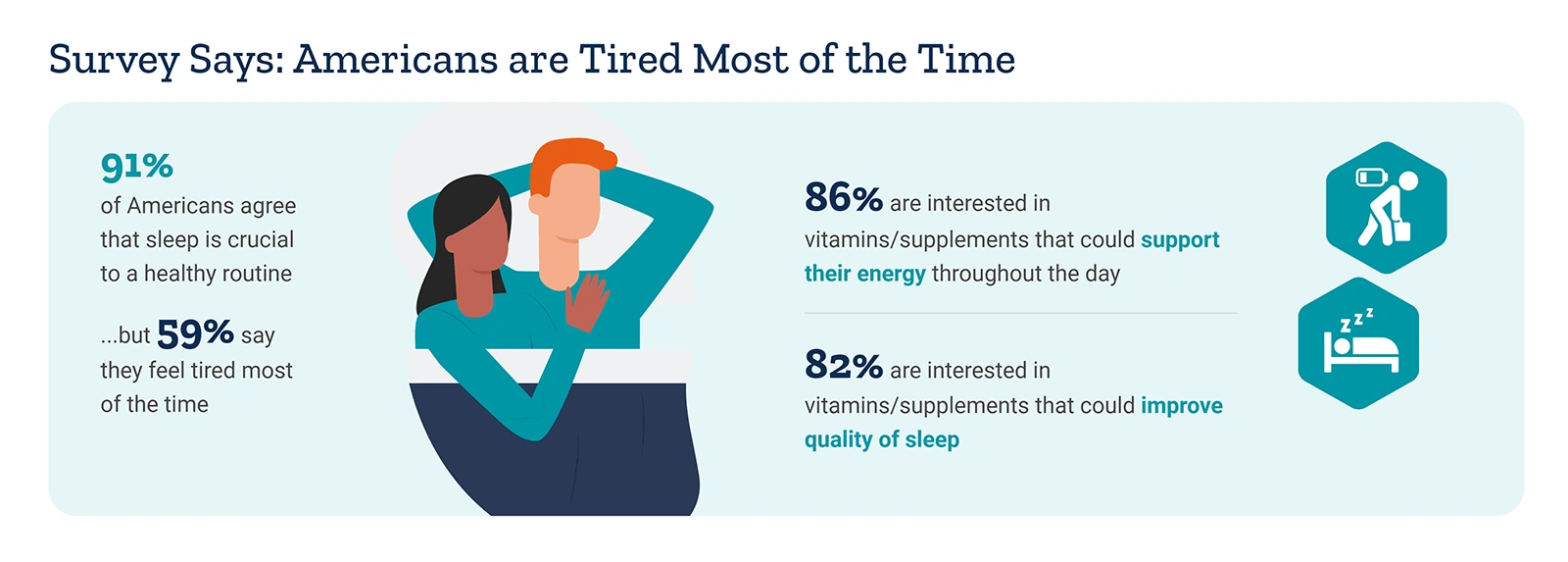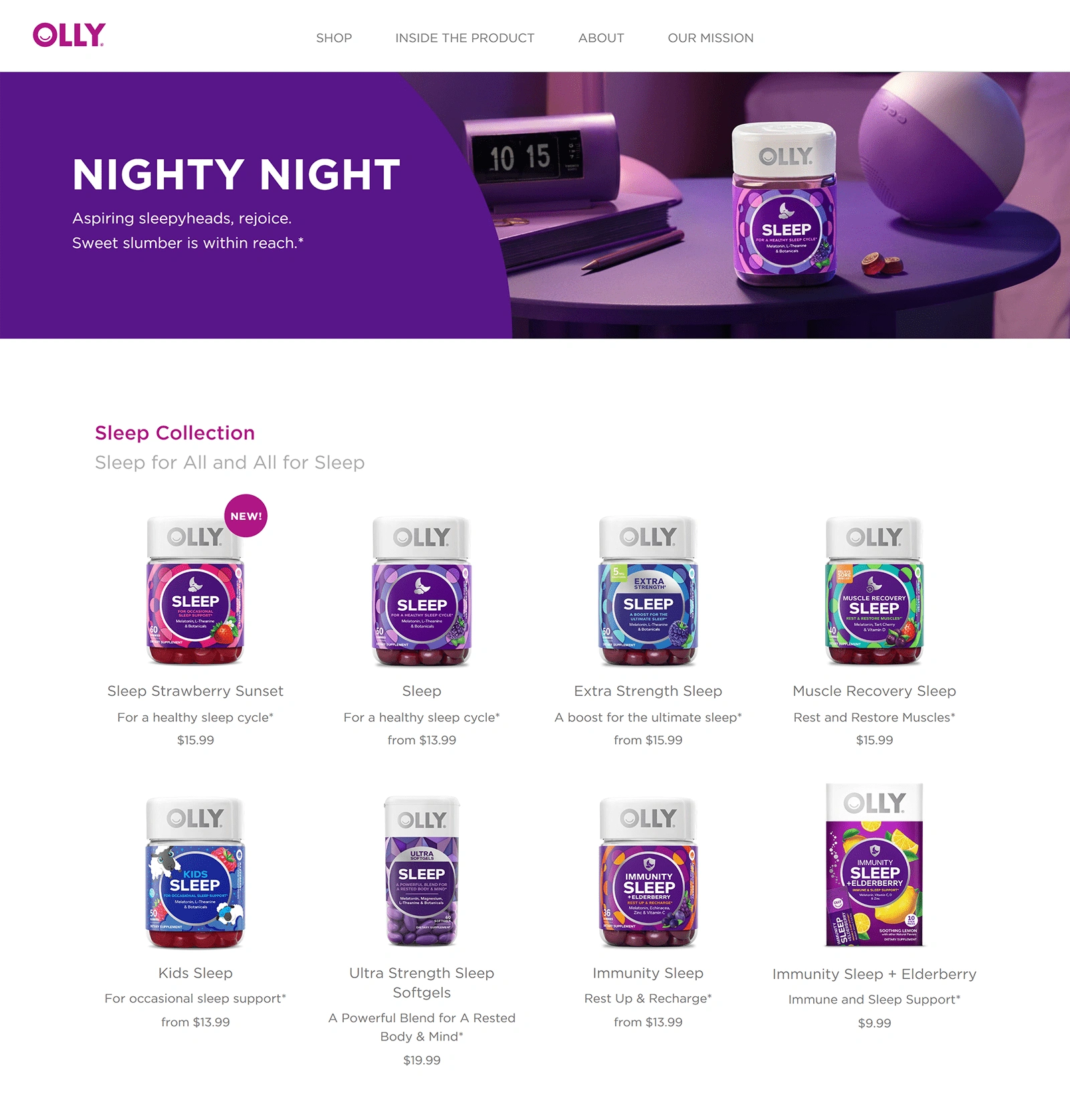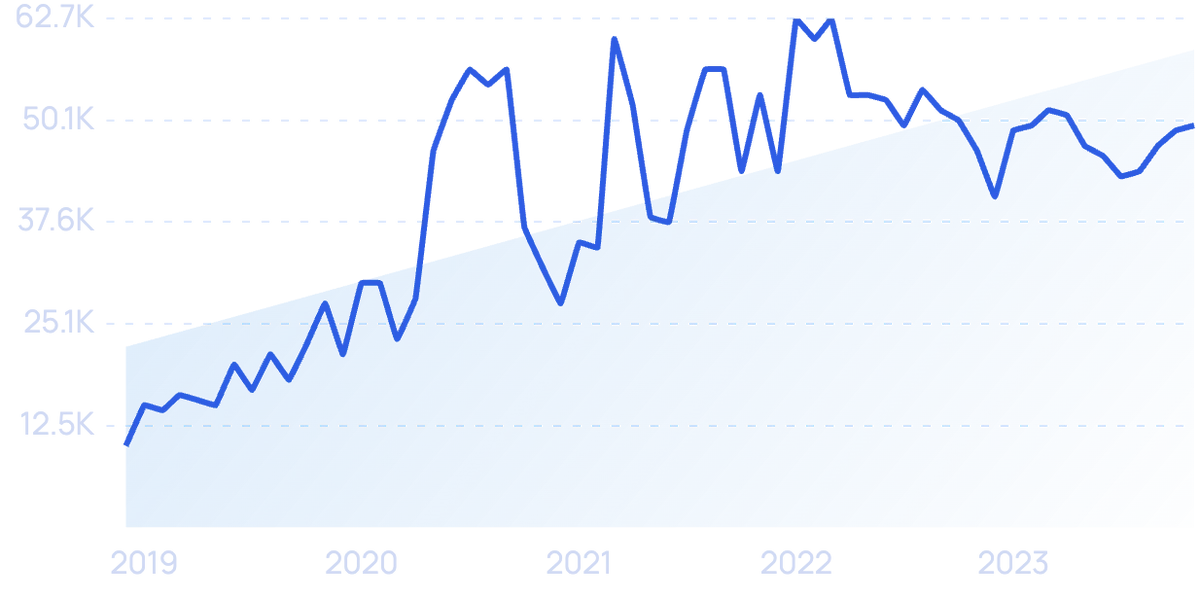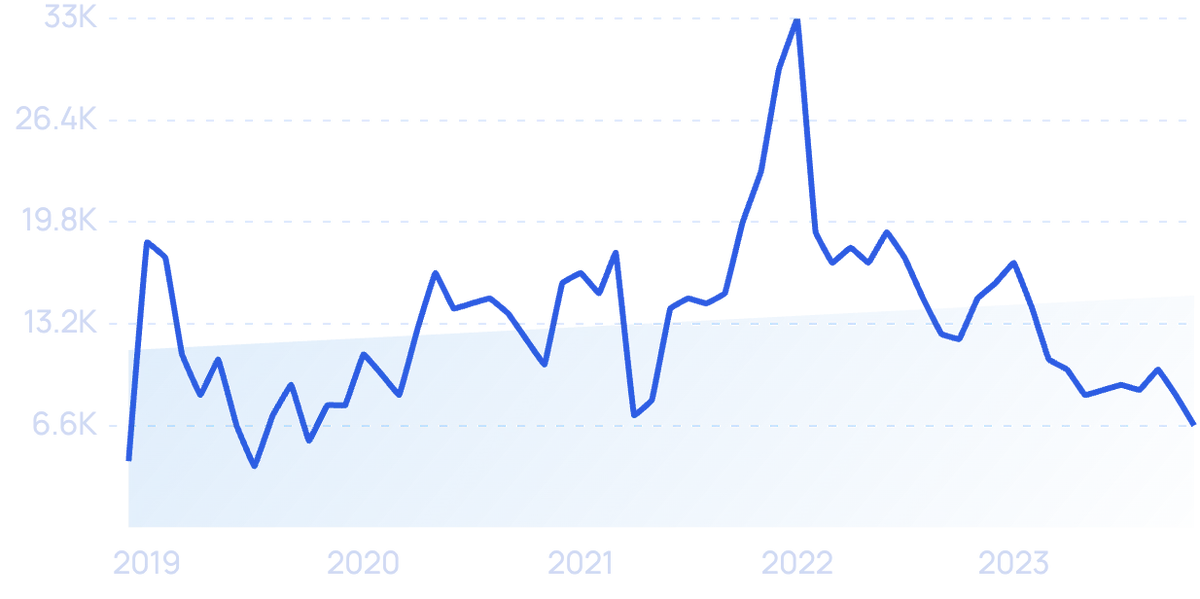
6 Growing Wellness Trends (2024-2027)
You may also like:
To today’s consumers, wellness is an all-encompassing topic.
It involves the food we eat, the supplements we take, the sounds we listen to, and even the way we design our homes.
Nearly 80% of consumers believe that wellness is important, and they’ve driven the global wellness market to hit $1.5 trillion. That represents a big opportunity for businesses across several sectors.
This is the latest list of wellness trends to pay attention to over the next 3-5 years. Along with specific examples of what’s pushing each trend to the forefront.
1. IV therapy moves outside the hospital
One of the latest trends to blend traditional Western medicine with alternative treatments is IV therapy.
This wellness concept involves going to a drip bar or IV lounge to get an IV that delivers specific vitamins and nutrients to the body in order to fight off a variety of maladies: fatigue, hangover, dehydration, and others.
Many wellness practitioners advocate for IV therapy because it aids in the absorption of vitamins and minerals.
According to one doctor, 30% of a vitamin is absorbed by the body if it’s taken by mouth, but if it’s taken through IV, 100% is absorbed.
According to a Mindbody survey, IV therapy services are up 50% since 2020.
Despite its popularity with consumers, some medical experts caution against using this type of treatment, saying it’s a waste of money and potentially dangerous.
Still, many celebrities continue to popularize IV therapy.
Celebrities are promoting IV therapy as an anti-aging wellness treatment.
One IV therapist in New York City serves professional athletes, Wall Street executives, and celebrities.
During peak cold and flu season, she says she administers up to 15 IVs every day and reportedly makes a six-figure income.
The DRIPBaR is one IV therapy franchise that’s serving celebrities and average consumers alike.
They currently have more than 200 locations across the country.
2. Boosting immune health with food and supplements
Demand for immune-boosting products and services boomed during the pandemic.
Even though demand is decreasing slightly in 2024, this segment remains one to watch closely.
Surveys show that individuals are still emphasizing immune health.
More than half of Americans say they are focused on health and wellness so that they can strengthen their immune system and fight off disease.
Mindbody’s survey found US consumers are interested in increasing their immune health post-pandemic.
Diet and supplements are two of the biggest ways consumers are looking to boost their immune health.
One survey showed that 50% of people are turning to healthy food to boost their wellness naturally.
The surge in the popularity of mushrooms is one example.
Search volume for “mushroom liquid” has grown 96% over the last 5 years.
This modest vegetable provides a host of immune-boosting antioxidants, vitamins, and minerals.
Reports put the value of the mushroom market near $19 billion by 2025.
So Good So You is one brand that’s capitalizing on this trend.
The company makes functional plant-based beverages and features one immunity blend that’s “powered by mushrooms.”
The immunity blend from So Good So You includes shiitake, maitake, and reishi mushrooms.
The company calls its mushrooms adaptogenic, which means they help the body manage stress, achieve balance, and improve gut microbiota.
Searches for “adaptogen” are on a steady climb, up 270% in the past 5 years.
In addition to immune-boosting foods, people are also turning to supplements.
The immune health supplements market is worth $18.22 billion in 2020 and is expected to hit $31.5 billion by 2028.
A report from ADM, one of the largest nutrition companies in the US, showed that nearly 80% of consumers say taking supplements is important to their overall health.
Market research experts say the zinc supplement market is being driven by increased attention to immune system health among consumers. They expect to see a CAGR of nearly 9% through 2028.
2. Mental wellness apps and online therapy gain popularity
According to The American Psychiatric Association, more than one-quarter of Americans are actively seeking to improve their mental wellness in 2022.
Meditation, therapy, mental health apps, journaling, and logging off social media are their top focus.
The value of the global meditation market is skyrocketing, growing at a CAGR of 18.5% through 2030.
The global meditation market is showing large gains worldwide.
One of the most valuable segments of the market is mediation apps. It’s worth more than $1 billion.
Calm, a guided meditation app, continues to be the highest-grossing app in the health and wellness space.
In March 2022, it brought in more than $7.5 million in revenue.
Headspace, another meditation app, ranked third with $5 million in revenue.
Headspace offers various meditation sessions and techniques on its app.
Therapy is another trend we see emerging in the mental wellness space.
Research says one out of six Americans saw a therapist for the first time in 2020. An additional 31% continued or returned to therapy in 2020.
Demand for therapy continues to rise, according to the American Psychological Association. In 2021, more than 40% of psychologists reported an increase in the number of patients they’re treating.
Post-pandemic, online therapy is a trend we expect to stick around.
Numerous surveys and studies have shown that the majority of patients prefer online therapy and some even have better results when compared with in-person therapy options.
With more than 2 million users, BetterHelp is one of the largest online therapy platforms. They offer sessions via chat, phone, or video.
Search volume for “BetterHelp” has shown a sharp increase (330% in 5 years).
Northwestern University recently partnered with the platform to provide up to 20 weekly sessions of online therapy to students at no cost.
BetterHelp has also partnered with celebrities like Justin Bieber and Ariana Grande to promote their services and overall mental well-being.
3. Supplements emerge as a primary sleep wellness solution
In 2021, half of Americans listed improving their sleep as a top mental health priority, according to a study sponsored by Nature Made.
The study went on to report that 74% of respondents would rather sleep well every night than get a promotion at work.
This is leading many consumers to utilize sleep support supplements.
Vitamin and supplement supplier Life Extension recently reported that 82% of people are interested in vitamins and supplements that can improve sleep quality.
Poor sleep quality is a concern for many Americans.
In September 2021, the sales of sleep supplements on Amazon had increased 55% year-over-year.
Melatonin, a natural sleep supplement, has been particularly popular lately. More than one-third of people reported taking it in a 2021 survey.
Searches for “melatonin gummies” have grown by 237% in the last 5 years.
Wellness brand OLLY produces several lines of supplement gummies, including eight types of sleep supplements.
OLLY’s sleep solutions are targeted at both children and adults.
Tech solutions are also popular with those who can afford pricier ways to improve their sleep wellness.
Eight Sleep develops “sleep fitness” products aimed at using technology to promote quality sleep.
The company’s mattress utilizes thermoregulation, sleep tracking, and biofeedback technologies, providing 20% more deep sleep and 30% less tossing and turning, according to the company.
Eight Sleep was named one of 2022’s Most Innovative Companies by Fast Company.
4. Popularity of plant-based eating continues to rise
In the past 15 years, the number of people eating a plant-based diet has grown from an estimated 290,000 to 9.7 million people.
With an increase of around 400% over the past 5 years, “plant-based” has become a popular trend.
Nearly 50% of today’s consumers are looking for “plant based” foods and drinks.
Consumers, especially those from the Gen Z and Millennial generations, are looking to add “clean” foods to their diets in order to boost wellness.
And, they’re willing to pay for it. Sales of plant-based foods grew 6.2% in 2021, ending at an all-time high of $7.4 billion.
A few plant-based diet trends are feeding into this trend.
The Pegan Diet combines veganism and Paleo. Individuals following this diet eat approximately 75% plants and 25% sustainable proteins like eggs and fish.
Flexitarianism and reducetarianism emphasize a similar idea: eat mostly vegetarian, but incorporate some meat occasionally. This diet made Whole Foods’ list of top food trends for 2022.
Companies offering plant-based foods are looking to tap into this trend and increase revenue.
In 2021, there were 13 separate funding rounds for plant-based food companies that raised more than $100 million.
Eat Just is one example. The company raised $200 million in early 2021 with investments from the Qatar Investment Authority and Vulcan Capital.
Search volume for “Eat Just” has shown incredible growth (54% in 5 years).
The company has a very successful line of plant-based egg products, and it’s expanding into the lab-grown meat market with the goal of producing 30 million pounds of “chicken” annually.
5. Wellness impacts the home
The American Society of Interior Designers reported that “health and wellness” was one of the top interior design trends for 2022. Spaces that promote good health and mental wellness are incredibly popular among clients, they say.
Installing infrared saunas is one way people are investing in wellness at home.
One St. Louis spa company says their orders for infrared saunas have nearly doubled since the start of the pandemic.
These types of saunas use the heat generated by infrared lamps. It’s a gentle radiant heat and most of these units operate between 100°F and 150°F.
Health experts say infrared saunas are able to promote circulation, aid in muscle recovery, relieve joint pain, and decrease stress in individuals who use them.
Another emerging wellness trend is individuals dedicating spaces in their homes to meditation and mental health. It’s one more way they’re investing in purposeful rest and relaxation.
We’re seeing this trend emerge as people build “emotional escape rooms” and “meditation corners”.
Search terms closely related to meditation and emotional wellness made Pinterest’s list of top trends for 2022.

These in-home wellness features are in high demand in today’s real estate market, too.
“The pandemic has driven the idea of ‘building for human health’ into the mainstream consumer consciousness, and the recent market growth far exceeded our predictions,” said a researcher from the Global Wellness Institute.
Reports show that more than $130 billion of the global construction market is spent on creating living spaces with design aesthetics and materials that are dedicated to wellness.
Real estate app Zillow echos that statistic.
Their data shows that homeowners who add a meditation room to their home can add about 2% to their selling price.
6. Sound healing promotes relaxation and mental wellness
Sound and music therapy dates back to ancient Greece, but in recent months, sound healing has started to go mainstream.
Put simply, sound healing is the process of using various sounds (things like specific beats and tones, gongs, singing bowls, chimes, and the like) to elicit relaxation and, according to many advocates, real healing.
Sound healers utilize a variety of instruments.
Scientific studies have found that sound healing lowers tension and boosts participants’ moods.
Other sound healing experts go even further, saying the techniques can realign the body on three levels: emotional, physiological, and psychological.
Companies like Google, Nordstrom, and Dove have been offering virtual “sound baths” for their employees. It’s a process where a therapist plays sounds that bathe individuals in sound as they lie down and relax.
Search volume for “frequency healing” is up more than 200% in the past 5 years.
The Global Wellness Institute identifies nine sub-trends for sound healing. Sound wellness is expected to touch everything from architectural design to healthcare to emotional wellness, according to the Institute.
One startup, Endel, has created an AI soundscape to help users focus, relax, and sleep.
Endel’s sound therapy is based on neuroscience principles.
Their patented technology utilizes data from devices and sensors to create personalized soundscapes. The sounds adapt to the weather, the time of day, location, heart rate, and other metrics.
The company continues to attract investors. In April 2022, they raised $15 million in a Series B funding round.
Conclusion
That concludes our list of important wellness trends.
Statistics show us that consumers are paying more attention to emotional, physical, and mental wellness than ever before. And, they aren’t shy about spending their income on products that can help them achieve their wellness goals.
Companies that can tap into these consumer pain points and release solutions that deliver results are likely to come out on top.
Stop Guessing, Start Growing 🚀
Use real-time topic data to create content that resonates and brings results.
Exploding Topics is owned by Semrush. Our mission is to provide accurate data and expert insights on emerging trends. Unless otherwise noted, this page’s content was written by either an employee or a paid contractor of Semrush Inc.
Share
Newsletter Signup
By clicking “Subscribe” you agree to Semrush Privacy Policy and consent to Semrush using your contact data for newsletter purposes
Written By


Josh is the Co-Founder and CTO of Exploding Topics. Josh has led Exploding Topics product development from the first line of co... Read more



